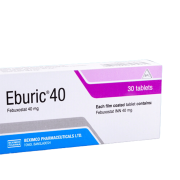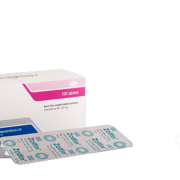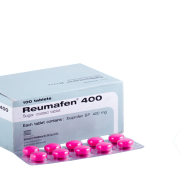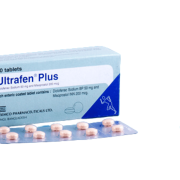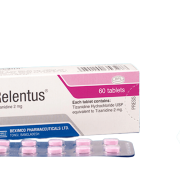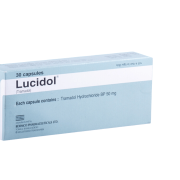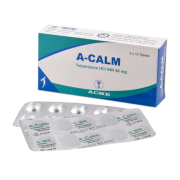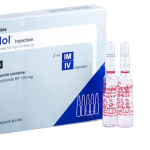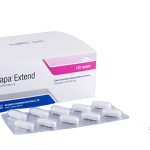Mobicam
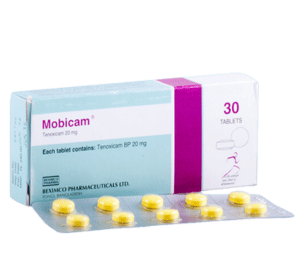
Generic Name: Tenoxicam 20 mg
Dosage Form: Tablet
TG Name: Musculoskeletal
1. What Mobicam is and what it is used for?
Mobicam (Tenoxicam) is a non-steroidal antiinflammatory drug (NSAID) with anti-inflammatory, analgesic, antipyretic properties and it also inhibits platelet aggregation. Tenoxicam inhibits prostaglandin biosynthesis and used in the treatment of inflammatory and degenerative disorders of the musculoskeletal system.
Mobicam is indicated for the symptomatic treatment of rheumatoid arthritis, osteoarthritis, ankylosing spondylitis, acute gout, and extra-articular inflammations such as tendinitis, bursitis and periarthritis of the shoulders or hips. It is also indicated in musculoskeletal & postoperative pain and in primary dysmenorrhea.
2. Before you take Mobicam
Do not take this medicine and tell your doctor if:
Before taking Mobicam, tell your doctor or pharmacist if you are allergic to it; or if you have any other allergies.
Caution should be exercised in patients have symptoms of gastrointestinal diseases. If peptic ulceration or gastrointestinal bleeding occurs, Tenoxicam should be immediately withdrawn. It is necessary to adequately monitor the patient with increased risk of developing renal failure, impaired renal function in diabetics, hepatic cirrhosis and congestive heart failure. Patients having coagulation disorders or receiving therapy that interferes with haemostasis should, however, be carefully observed when treated with Tenoxicam. In women who have difficulty conceiving or are undergoing investigation of infertility, withdrawal of Tenoxicam should be considered.
Take special care with Mobicam
Check with your doctor before taking this medicine if:
Tenoxicam should not be administered to patients with active peptic ulcer or active inflammatory diseases of the gastrointestinal tract. Tenoxicam is contraindicated in patients who have shown hypersensitivity to the drug. It should not be used in patients in whom acute asthmatic attacks, urticaria, rhinitis or other allergic manifestations are precipitated by ASA or other nonsteroidal anti-inflammatory agents. Fatal anaphylactoid reactions have occurred in such individuals. Before anesthesia or surgery, Tenoxicam should not be given to elderly patients, to patients at risk of renal failure, or to patients with increased risk of bleeding, because of an increased risk of acute renal failure and possibility of impaired hemostasis. Tenoxicam is relatively contraindicated in patients with liver dysfunction.
Taking other medicines
Salicylates increase the clearance and volume of distribution of Tenoxicam by displacing it from protein binding sites. Concurrent treatment with salicylate or other NSAIDs is not recommended because of increased risk of undesirable reactions. Co-administration of Tenoxicam and methotrexate has been associated with reduced renal tubular secretion of methotrexate. As with NSAIDs in general, Tenoxicam should not be administered concurrently with potassium sparing diuretics. Tenoxicam might attenuate the antihypertensive effects of adrenergic blockers and ACE-inhibitors. It may also enhance the effect of antidiabetic drug (sulphonylurea group).
Pregnancy and breast-feeding
The safety of Tenoxicam during pregancy has not been established therefore it should be used with caution during pregnancy and only if the benefit to the mother is greater than the risk of the fetus. There is no information available about the safety of Tenoxicam during breastfeeding therefore it should not be used during lactation.
3. How to take Mobicam?
For all indications (except primary dysmenorrhea, post-operative pain and acute gout) the usual recommended dose is 20 mg once daily. Tenoxicam should be taken at the same time of day; in case of rheumatoid arthritis Tenoxicam should be taken at night to relieve the morning stiffness. The recommended dose for primary dysmenorrhea is 20 to 40 mg once daily. For post-operative pain the recommended dose is 40 mg once daily up to five days and for acute attacks of gout the recommended dose is 40 mg once daily for two days followed by 20 mg once daily for a further five days.
If you forget to take Mobicam
If you forget to take a dose, take it as soon as you remember it. If it is almost time for your next dose, do not take the missed dose. Take the next dose on time.
If you stop taking Mobicam
Do not stop taking this medicine without talking to your doctor. You should not stop taking Mobicam just because you feel better. This is because the problem may come back or get worse again.
If you have any further questions on the use of this product, ask your doctor or pharmacist.
4. Possible side effects
Like all medicines, Mobicam can cause side effects, although not everybody gets them.
Tenoxicam is well tolerated in the recommended doses. The usual side effects are mild and transient gastric, abdominal discomfort, dyspepsia, heartburn, nausea, dizziness, headache, itching, erythema, rash, urticaria, increase in BUN or creatinine, edema and palpitations. In isolated cases GI-perforation, asthma, angioedema and elevated blood pressure may occur.


